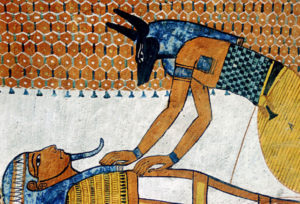The ancient Egypt were the first civilizations who trained clinicians to treat physical alimony. Medical papyrus, such as Edwin Smith Papyrus (circa 1600 f.kr) and papyrus (circa 1534 f.kr), provided more information about disease management including wound healing using various potions and fats to help cure. [1, 2]
Hippocrates (Greece Doctors and surgeons, 460-377 f.kr.), is known as the father of the medicine, uses a bandage wrapped in open wounds to irrigate and prevent further injuries around the wound. His teachings remained not for centuries.
Galen (the Greece surgeon to the Roman Gladiator, 130-200 CE) was the first one to recognize that the pus from the wounds given by the Gladiator had announced the Cure (Pus-nam laudabile [good and respectable pus “]).
Unfortunately, the observation of the crow was misinterpreted and the concept of pus predicting the healing of the wound lasted well into the 1700 century. The connection between the formation of pus and the healing was very strong, the foreign body was introduced to the wound to promote the formation of pus-the festering stressed. The concept of wound healing remained a mystery, as emphasized by a proverbial proverb by the Ambroise Pare (France military surgeon, 1510-1590), “I wound up. God healed it. 3]
The extent of the ulcer infection was most evident in times of wartime. During the American Civil War, according to 1883 anonymous sources, erysipelas (soft tissue necrosis infection) and hard cramps for more than 17,000 deaths. When the fracture of the compound was nearly always associated with the infection, cutting was the only option, despite the risk of 25-90% of the blunt infection that severed.
Koch (professor of hygiene and Microbiology, Berlin, 1843-1910) first recognized the causes of infection focus as secondary to the growth of microbes in his 1800-century assumptions. Semmelweis (Austria Physicians, 1818-1865) performed postmortem studies and showed five declines in puerperium sepsis by hand-washing between entering the delivery room.
Joseph Lister (professor of Surgery, London, 1827-1912) and Louis Pasteur (France bacteria, 1822-1895) revolutionized the whole concept of wound infection. The list acknowledged that anti-sepsis can prevent infection. [4] In 1867, in .1871 where he sterilized the wound and placed the carbolic acid in a fractured open to prevent sepsis and thus the need for cutting, the list began using Carbolic spray in the operating room to reduce pollution. But the notion of an injured festering is also held among eminent surgeons like John Hunter .5]
The Second World War resulted in a new type of wound from high-speed bullet and debris damage combined with contamination from the mud from the trenches. Antoine Depage (Belgium military surgeon, 1862-1925) the wounds that were reinstated were broken and delayed the closure of the wounds As guidance for the timing of the closure of secondary wounds relied on the microbiological assessment of the scar brush. [6] Alexander Fleming (microorganism, London, 1881-1955) made much of his bacteriologic research under 1.
As of 1800 figure recently, sterile surgery was not a routine practice. The sterilization of the instrument began with 1880 ‘ ies, who made the wear of dresses, masks and gloves. Halstead (professor of Surgery, Johns Hopkins University, 1852-1922) introduced rubber gloves to his scrub nurse (and future wives) because they had developed skin irritation from chemicals used in disinfection instruments. Everyday use of gloves is good, Halstead were introduced by pupils.
Penicillin was first used clinically by Howard Flory in 1940. By the use of antibiotics, a new era in the management of ulcer infections began. Unfortunately, the eradication of infectious pests affects the emergence of antibiotic resistant strains and surgical wounds that are not completed due to the nature of immune patient and more adventurous surgical interventions in implant surgery.

Leave a Reply